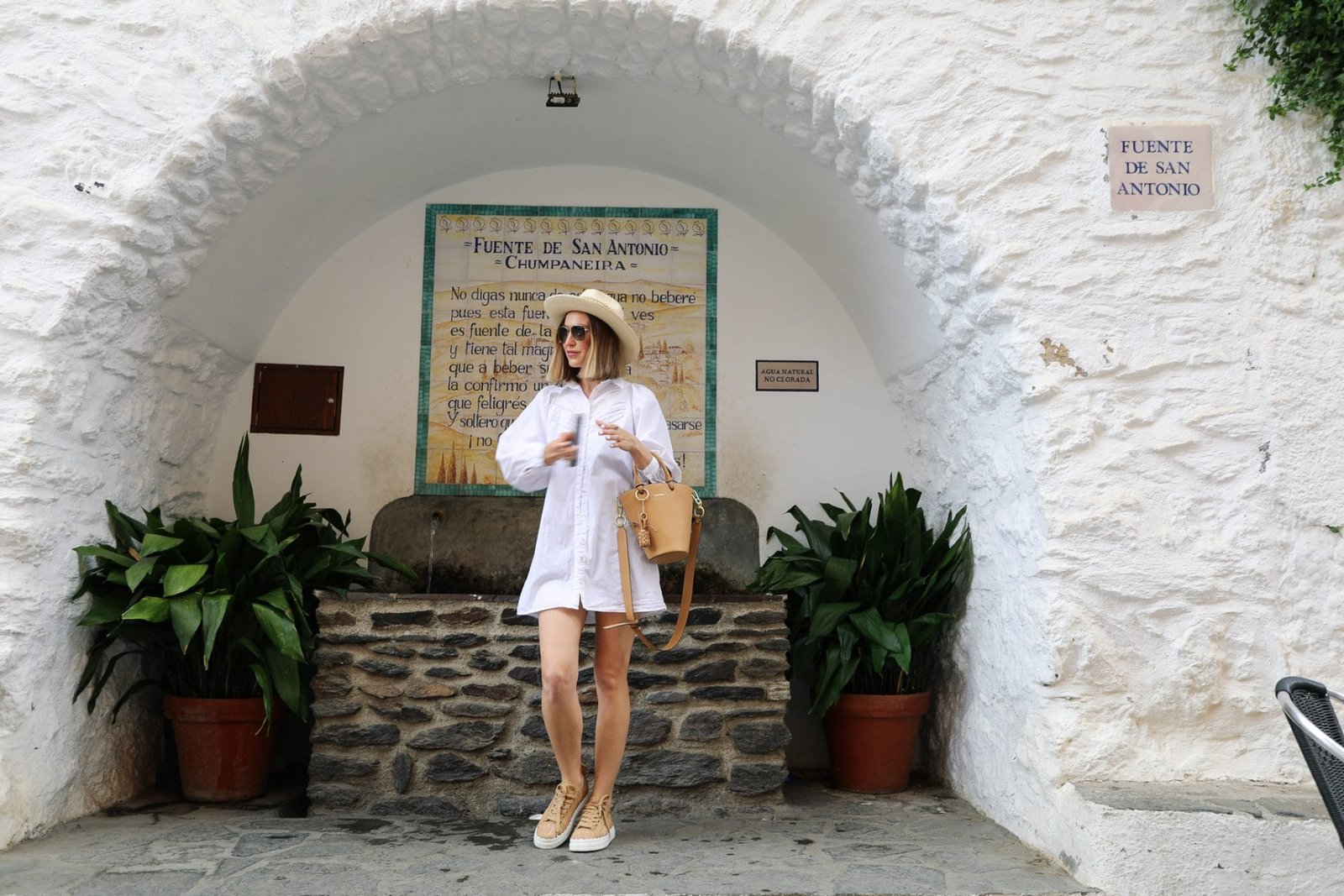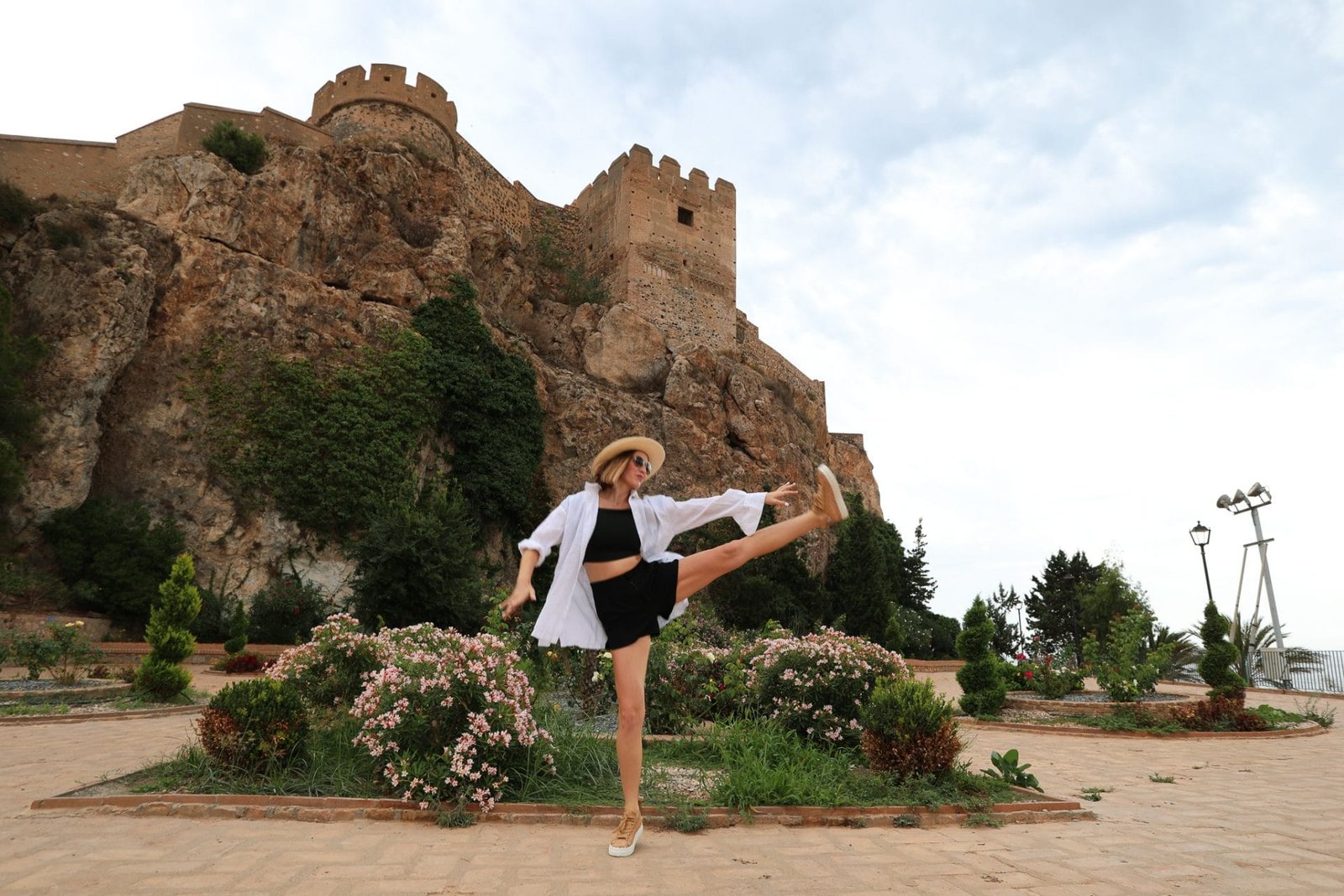
Andalucia Roadtrip: White Villages Route
Andalusian villages have a distinctively white appearance that sets them apart from other Mediterranean settlements. This is due to the 800-year Moorish occupation of the region. It left a huge mark on the architecture and culture of Andalusia. These villages are bathed in Atlantic and Mediterranean light, giving them a unique appearance that changes throughout the day. They take on an ashen hue by moonlight, gleaming brightly against the red cliffs in the midday sun. In the evening, they turn a milky white against the green landscape of Andalusia. No matter what time of day, these villages always have a beautiful and enigmatic quality.
Andalusia’s White Towns Route
The Route of the White Towns is a scenic route that runs along the coast and through the mountains, offering visitors a chance to explore these villages. The towns are often built on the edge of cliffs or hidden valleys and provide various activities and attractions. The Route of the White Towns is a great way to experience Andalusia’s unique culture and natural beauty.

Andalusia’s whitewashed villages are a feast for the eyes. With their red-tiled slanting roofs and black wrought-iron grilles, they look unlike any other houses in the Mediterranean. And yet, despite their exotic appearance, these houses are remarkably comfortable and practical. The shutters help to keep out the summer heat, and the flowerpots provide a convenient way to water the plants. It is no wonder that so many tourists flock to Andalusia each year to see these unique villages for themselves.
What are the White Villages (‘Pueblos Blancos”) of Andalucia?
The white villages of Andalusia, or ‘Pueblos Blancos,’ are a group of nineteen villages in the province of Cadiz which sit within Andalusia. The Moors occupied Andalusia for centuries and left their mark on the landscape and architecture. When the Christians reconquered Andalusia in 1492, they drove the Moors out and many of the Moorish buildings were destroyed.
However, some of the Moorish architecture survived and can still be seen in the White Villages. The whitewashed houses with red tile roofs, wrought iron balconies and flower-filled courtyards are a distinctive feature of Andalusian architecture. The White Villages are a must-see for anyone interested in Moorish history or Spanish culture.

Why are Andalusian villages white?
Andalusia’s white villages or pueblos blancos are perhaps its most iconic and distinctive feature. But their whiteness is more than just aesthetic. It’s a practical way to keep cool in Andalusia’s hot, dry climate. The white walls reflect the sun’s heat, keeping homes cooler in the summer months. And in the winter, when Andalusia can get chilly, the whitewash helps to trap heat and keep homes warm. The villages are a beautiful example of form following function, and they give Andalusia its unique character.
When were Spain’s white villages built?
The villages were created in the centuries-long Muslim-Christian conflict that culminated in the fall of Granada in 1492. Andalusia’s white villages are a gem; anyone who visits them will be charmed by their beauty and intrigued by their history. Scrupulously whitewashed, they are strategically placed in the mountains and make few concessions to tourism. Their settings are beautiful, and their history is fascinating.
What are the must-visit white villages in Andalusia Spain?
Ronda
The village is built on an ancient Roman settlement site and is well known for its bullfighting tradition. Ronda is also a popular tourist destination due to its stunning scenery. Ronda is situated atop a plateau surrounded by mountains and valleys. Several bridges connect Ronda to the rest of the province, including the Puente Nuevo, built in the 18th century. Ronda is a beautiful and historic village that is definitely worth a visit.
Ronda Moorish Herritage
The narrow, labyrinthine streets and whitewashed buildings are evidence of Ronda’s Moorish heritage. Ronda was also the site of the first bullfight in Spain. Today, Ronda is a popular tourist destination for its stunning views of the Sierra Nevada mountains and its historical significance.
Ronda Festivals
Ronda comes to life in the spring and summer with its many festivals. One of the most popular is the Feria de Pedro Romero, which takes place in September. The highlight of the festival is the parade of women dressed in Goyesque costumes, followed by a traditional Goyesque bullfight. Another popular festival is the Ronda International Folk Gala, which takes place at the end of August and the beginning of September. The Folk Gala features folk dances from all over the world, performed by groups from over 50 countries. Ronda is a truly special place during these times of the year, and its festivals are not to be missed.
Setenil de las Bodegas
Setenil de las Bodegas in Spain is a town with a long history of wine production. The town got its name from the many wineries that used to operate in the area. Although the number of wineries has declined in recent years, Setenil de las Bodegas is still known for its delicious olives and almonds. Setenil de las Bodegas in Spain is a town with a unique history.
What does Setenil de las Bodegas mean?
Seven times the Romans came, and seven times they were turned away- such was the reputation of Setenil de las Bodegas that even the great empire couldn’t conquer it. The name Setenil, meaning ‘seven times without result’, is a tribute to the city’s brave past.
It got its name from the thriving wine trade that was once present there. The number of wineries has declined over the years. But Setenil de las Bodegas is still known for its delicious olives and almonds.
The most unusual white village of Andalucia
Setenil de las Bodegas is most famous for its unusual cave houses. These houses were built directly underneath the boulders of a deep canyon. The canyon was formed naturally by the water from the creek below, creating an incredible landscape.
The cave houses are a fascinating example of how people have adapted to their surroundings throughout history. Setenil de las Bodegas is a town worth visiting for its fascinating history and beautiful scenery.. The cave houses are a unique feature of Setenil de las Bodegas. They offer an exciting way to experience this historic town.
Olvera
Olvera is a small town located in the province of Cadiz, Andalusia, Spain. The town is situated on a hill in the Sierra de Cádiz mountain range. Olvera has been known since Moorish times for its olives and olive oil production. In addition to the product, which is a local pride, tourists are attracted here by historical and architectural sights.


Olvera Spain Main attractions
The Olvera Castle is one of the most popular tourist attractions in Olvera. The castle was built by the Moors in the 8th century. Olvera was once an important outpost for the Moors because it guarded the route between Seville and Córdoba.
The Olvera Castle
The Olvera Castle offers stunning views of Olvera and the surrounding countryside. Another popular tourist attraction is the Church of Santa María de la Encarnación, built in the 16th century.
La Cilla
The church has a beautiful baroque façade decorated with paintings by Spanish artist Francisco de Zurbarán. Olvera is also home to La Cilla, a cultural center that offers visitors a glimpse into the town’s rich history. La Cilla was once a Moorish convent, and it now houses a museum, library, and auditorium. Olvera is a charming town with a rich history and culture. Olvera is the perfect destination if you’re looking for a place to relax and enjoy some good food and wine.
Olvera climate
Olvera has a Mediterranean climate with an average annual precipitation of 10 inches. July temperatures average 85 degrees Fahrenheit and January temperatures average 50 degrees Fahrenheit.
Where is Olvera located
Olvera is 35 miles from Jerez de la Frontera, 106 miles from Seville, 158 from Córdoba and only 5 from El Bosque.
Jerez
Jerez is a Spanish city with a long and rich history. It is best known as the world’s sherry capital, but Jerez has been known by many names over the centuries. The word sherry supposedly came from the Spanish word “Jerez”, but it seems more likely that both words stem from the Arabic Scxherisch. This is what they called it during the 400 years of Moorish occupation. Before that, Jerez had been known as Xera by the Phoenicians and Ceret by the Romans. Jerez de la Frontera is a large and vibrant city in the Andalusian province of Cadiz in southern Spain. The city is home to a rich history and culture.
Jerez main attractions
It is well known for its sherry production and beautiful white houses with black-grilled balconies. The city center is a confusing network of oneway streets, but it is worth exploring. Jerez is a great place to slow down and enjoy the simple things in life. The climate and customs combine to create a relaxing atmosphere, and the scenery is breathtaking. If you are looking for a place to get away from it all, Jerez is the perfect destination.
Best things to do in Jerez de la frontera
It is renowned for its wine, flamenco, horses, and Formula One racing. Jerez is also a popular tourist destination, known for its beautiful architecture, lively atmosphere, and friendly people. Visitors to Jerez can enjoy various activities and attractions, from exploring the city’s many historical landmarks to sampling the local cuisine and reveling in the live music and dance performances.
Salobreña
Salobreña is a beautiful village located on the Costa Tropical in Spain. Salobrena is home to several fabulous beaches, popular among travelers who enjoy outdoor activities such as scuba diving and windsurfing. The mild waters and good tourist facilities make Salobreña an ideal destination for those who enjoy water sports.

Salobreña sights
In addition to its fabulous beaches, Salobreña is also home to several historical landmarks, including the Castillo de Salobreña, a Moorish castle built in the 10th century. Salobreña is a truly unique village that offers something for everyone. The village is situated on a hilltop and offers stunning views of the Mediterranean Sea. Visitors to Salobrena can enjoy all the village has to offer, from its gorgeous beaches to its historical landmarks. Salobrena is a must-see destination for anyone who enjoys sun, sand, and history.
Conclusion
The Route of the White Towns is a scenic route that runs along the coast and through the mountains, offering visitors a chance to explore these villages. The towns are often built on the edge of cliffs or hidden valleys and provide various activities and attractions.





Leave a Reply